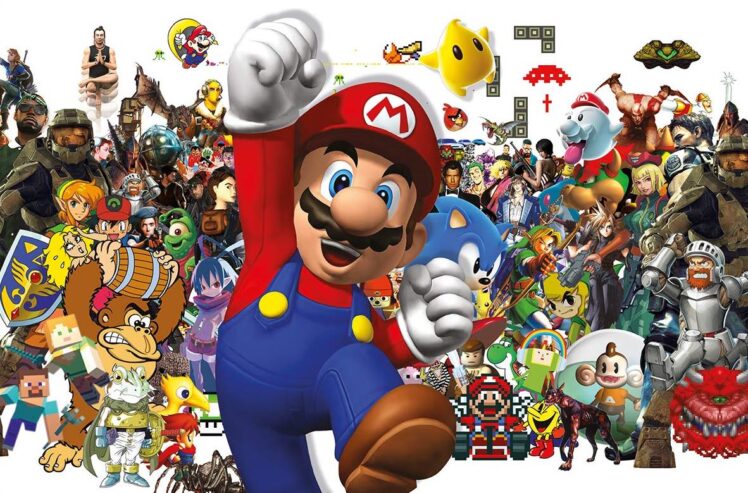Gaming Evolution: How It Started Vs. How It’s Going

Minecraft. This is a game of League of Legends. Titanfall and Tetris come to mind. Many of us have lived through the fascinating era depicted by the development of video games.
This article will examine the gaming industry’s history, current situation, and probable future. Everyone interested in video games or app development can relax and start playing.
Evolving Video Games: An Overview
By 2024, the global video game market will be worth more than a mind-boggling $200 billion. Most of the market’s income comes from mobile games, while about a third comes from console games. By 2025, the mobile gaming market will be worth approximately $11.35 billion in the United States alone.
Many of us now devote considerable time to playing video games. You may play on your TV, phone, or tablet, and you can choose from various genres. You can join others in real-time or play online at BetShah or offline. There are several legit sites like BetShah where you can play your favorite video and casino games.
For some time now, the myth that only male teens under 18 play video games have been disproved; in the United States, 38% of gamers are between 18 and 34, and 7% are 65 or older. There are roughly as many female gamers as male players in the United States, at 46%.
What led us to become a global community so obsessed with video games? We should investigate the origins of video gaming.
History of Video Games

Source: freixenet.com
The history of gaming app creation is long, and you might get three different replies if you ask three people to name the first video game. One person’s meaningless is another person’s treasure.
Many thousands of individuals tried it, but the computer always came out on top.
Despite this, Atari’s creation of Pong, a table tennis-themed arcade video game, is one of the industry’s most significant turning points.
Thanks to Atari, the arcade business model was reinvented. It wasn’t until 1973 that Pong was widely distributed, and subsequent years saw the installation of arcade machines in public spaces such as malls, clubs, and bowling alleys. Many competing brands entered the market with their variations.
This flood of Pong clones stifled the arcade market until 1978 when Space Invaders revitalized the industry. New franchises like Pac-Man (1980) and Donkey Kong (1981) helped fuel the industry’s expansion (1981).
PCs and the Gaming Industry

Source: forbes.com
When so many new systems and companies appeared after Space Invaders (1980), they flooded the market. The video game industry in North America collapsed in 1983 because there were too many systems and not enough good games.
Similar increases in popularity were seen in home computers like the Apple II and the Commodore Vic-20 at about the same time. These new systems were touted as “reasonable” solutions for family usage. They were within the price range of the average American at the time (about $300 in the early 1980s or about $860 now).
Compared to previous generations of game consoles, the processing capability of these computers was staggering. As a result, they allowed a new genre of gameplay to emerge, characterized by more complexity and reduced reliance on linearity. They also included tools for making one’s games in BASIC.
The Online Gaming Boom

Source: thenorthlines.com
Before giants like Nintendo and Sega set their sights on the online gaming market, many developers considered employing telephone lines to send data between consoles. For instance, in 1982, William von Meister debuted his CVC GameLine.
The fourth-generation 16-bit consoles’ debut in the early 1990s was a watershed moment in the development of modern online gaming. The Internet became accessible to the public after it was declared in the public domain in 1993.
The gaming industry is worth hundreds of billions of dollars because of the proliferation of mobile devices and the Internet. Xbox Live, an online gaming network released by Microsoft in 2001, quickly rose to prominence among the gaming community. World of Warcraft launched in 2004; by its peak, it had 14 million paying subscribers.
Game Boy consoles from Nintendo were still the market leaders at this time, but competitors like BlackBerry and Nokia were trying to introduce gaming capabilities into their own devices.
However, the iPhone from Apple was the device that ushered in the era of mobile gaming. A competitor to Apple’s App Store, the Google Play store, was also quickly made available for Android users. This paved the way for game app makers to make games available to a wide audience at no cost or for a little fee.
Who Gets to Play Video Games?

Source: understood.org
It would be dishonest to gloss over the pervasive “no girls allowed” attitude that has persisted in the gaming community for a long time and, to some extent, persists even today.
Video games haven’t always been aimed at teenagers and adults. Commercials would feature families where both parents and their children were involved in a game of Pong or similar activity.
Yet, the video game business saw a renaissance in the 1980s when it began advertising its products directly to youngsters. Toys for boys and girls still tend to be kept in different sections of the store. Based on their assumptions about their target demographic, video game developers primarily targeted young males. Advertising for video games after that point shifted to focus primarily on men.
The video game industry shifted its focus to men as those boys reached puberty, and the games’ portrayal of women became increasingly sexualized. As a result, there was a pattern of catering to men in advertising and making the setting unwelcoming to female customers.

Source: audacy.com
Nevertheless, the video gaming industry once again ran into a brick wall; the market had become saturated, and there were only so many males in the globe. Once again, video game firms shifted strategies to broaden their customer base.
Conclusion
Game development appears to have a bright future. The success of the sector is evident in the rise of streaming services, social media games, and cell phones. There were 2.7 billion gamers in the world in the year 2020.
Never before have gamers, especially the well-off had it so good. Gamers have their pick of a vast selection of video games, and many are keeping an eye on the newest virtual reality (VR) systems. The game industry is always developing and adapting.





